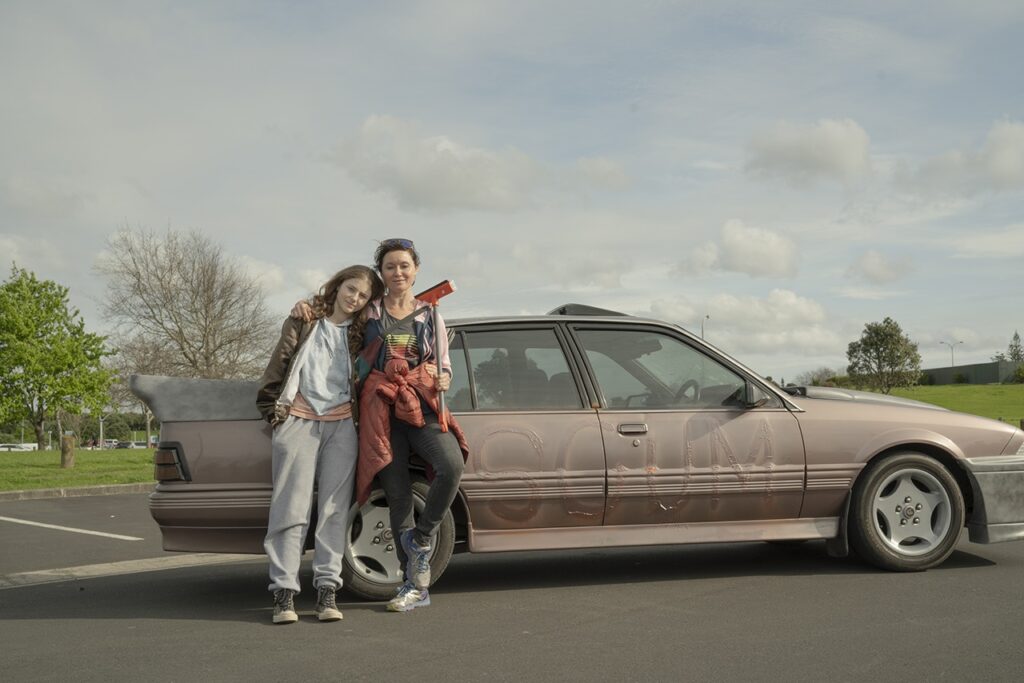Gaysorn Thavat began her film career in 1995 working in the camera department. Starting as a clapper loader, she worked her way up to 1st AC before making the switch to directing with television commercials in 2004. Along with commercials, Thavat has also directed episodic television. In 2009 Thavat directed her first short film, “Brave Donkey.” “Brave Donkey” was selected for numerous festivals including Melbourne, SXSW, London BFI, and Locarno.
“The Justice of Bunny King” is screening at the 2021 Tribeca Film Festival, which is taking place June 9-20.
W&H: Describe the film for us in your own words.
GT: It’s a character piece about a resilient woman struggling to get her kids back in a punitive government system, but more broadly, it’s a social justice action film about motherhood.
W&H: What drew you to this story?
GT: I absolutely love this character — her joy, wit, and determination, and the fact that she gets it wrong, is deeply conflicted, and yet she makes me smile. Also the desire to frame the resilience and strength of everyday women as kind of superheroes — to rewrite the narrative of motherhood.
We have so many narratives about male heroism, yet the strength of women and mothers is rarely celebrated. Sometimes just being a woman, a mother, and surviving in these punitive systems is heroic.
W&H: What do you want people to think about after they watch the film?
GT: When they go back into the world and see women like Bunny, I’d like them to wonder what her story might be and what she has survived, rather than passing a moral judgement.
W&H: What was the biggest challenge in making the film?
GT: It was an ambitious script with lots of locations and limited shooting time. It was low budget, so we made compromises where we could, but ultimately there are only so many hours in a day, so we had to work extremely fast on limited time and resources.
W&H: How did you get your film funded? Share some insights into how you got the film made.
GT: This film was made with funding from the New Zealand Film Commission. They had a 125 Women Filmmakers Fund which we were lucky to qualify for.
There was also some extra investment raised by the producer.
W&H: What inspired you to become a filmmaker?
GT: A constant motivation for me has been to tell female stories, outsider stories. Stories with the kind of characters I want to see. Characters that are complex and truthful and not through a reductive, air brushed, sexualized lens — unless she’s a character that challenges and subverts that viewpoint in a clever, deeply human, and interesting way!
W&H: What’s the best and worst advice you’ve received?
GT: Best advice: Be mindful of how you treat people on the way up — you might meet them again on the way back down.
Worst: Probably comes from my own inner critic. She’s full of unhelpful advice!
W&H: What advice do you have for other women directors?
GT: Film sets can often be quite male-dominated and intimidating, and there is often a hierarchy. It’s important to take the space — it’s your project, you have written and developed it, and it’s the reason they are all there. Don’t let yourself be intimidated.
If you can, surround yourself with crew and collaborators who have your back and share your vision. A good 1st AD and cinematographer who support you are key to running a smooth set and setting the tone. It’s worth holding out to get those good people around you — they are gold.
W&H: Name your favorite woman-directed film and why.
GT: Gosh I have so many I can’t choose one! Latest fave is “Nomadland,” directed by Chloé Zhao! But also love the films of Ava DuVernay, Debra Granik, Andrea Arnold, Clio Barnard, and Lynne Ramsay.
W&H: How are you adjusting to life during the COVID-19 pandemic? Are you keeping creative, and if so, how?
GT: I live in New Zealand, so we have been extremely fortunate: Our lockdown was relatively mild compared to the rest of the world.
We did have to complete post on the film during the first outbreak, which had its challenges. Since then I have kept busy working and developing projects, and also shooting material remotely for other countries where filming has been difficult.
W&H: The film industry has a long history of underrepresenting people of color onscreen and behind the scenes and reinforcing — and creating — negative stereotypes. What actions do you think need to be taken to make Hollywood and/or the doc world more inclusive?
GT: We need many more filmmakers from underrepresented groups — and not just as lip service to a diversity quota. These filmmakers need to have control of the narrative and given what is referred to in New Zealand as “kaitiakitanga” — guardianship of how their people are depicted and the viewpoint from where the story is told.







